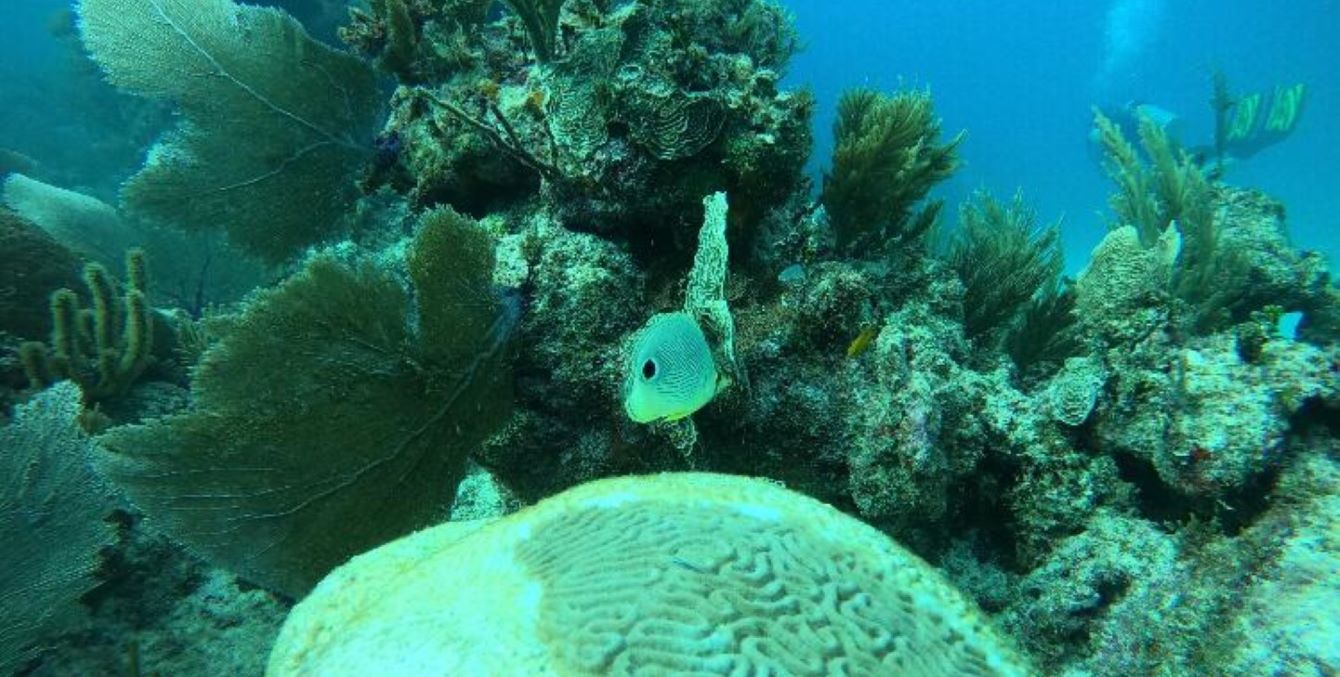This article explores the benefits of marine biology internships and features examples of GVI's marine conservation programs. Learn more!
Petrina Darrah
Posted: May 15, 2025

GVI
Posted: February 24, 2023
Coral bleaching is a big problem that’s affecting the health of our oceans and the delicate balance of marine ecosystems worldwide. While many people are aware of the issue, there’s still a lot of confusion about what causes it, how to identify it, and what we can do to prevent it.
Don’t worry though, that’s where we come in! Our goal with this article is to give you a comprehensive guide to coral bleaching. We’ll explain what causes it, what to look out for, and what you can do to help prevent it. We believe that by working together and taking action, we can make a real difference in protecting our planet’s precious coral reefs. So, let’s dive in and learn more about coral bleaching!
Coral bleaching refers to the white, ashen appearance of coral as a result of significant physiological stress. External stressors such as warm temperatures and pollution can cause corals to expel the symbiotic algae, zooxanthellae, that live in their tissues and give them their vibrant colours. This results in coral losing the nutrients and energy crops it acquires from these algae, weakening its structure and rendering it more susceptible to disease and other shocks.
Coral bleaching is a major threat to coral reefs around the world, as it can cause significant damage to the delicate coral ecosystem. In addition to the direct impacts of bleaching, the weakened coral is more vulnerable to other threats such as disease, storms, and ocean acidification. As a result, coral bleaching can have a devastating effect on the health of coral reefs, leading to a decrease in biodiversity and a decrease in the services they provide to humans.
The signs and symptoms of coral bleaching can range from subtle to pronounced. In its earliest stages, bleaching may manifest as extreme white patches or an ashen appearance on the coral’s surface. As bleaching becomes more severe, deeper signs may be apparent, including dull coloration, loss of elasticity, and dark pigment indicates death or distress. Additionally, the presence of mucus on the surface can be an indicator of fading health.
While coral bleaching is an issue with multiple contributing factors, researchers have identified several measures that can help to prevent and mitigate its effects. The most effective of these are:

In addition to prevention, there are also measures that can be taken to help coral reefs recover from bleaching events. One of the most effective methods is to introduce new, healthy coral to the affected area – which you could do in Fiji. This can help to restore the reef’s natural balance and provide a source of new genetic material. Transplanting healthy hard or soft corals from other locations in order to create patches or clusters that can buffer against extreme conditions or provide nutrients for other corals in the reef structure.
Carbon emissions are known to contribute significantly to ocean acidification which then causes coral bleaching. To combat this, governments have introduced legislation to reduce emissions, such as the Paris Agreement which mandates that countries commit to emissions reduction targets. Additionally, concern among citizens has grown and strengthened in recent years, leading to increased public pressure to reduce carbon emissions.
To reduce your own carbon footprint try:
Efforts must also be put in place to address environmental stressors that lead to coral bleaching. These include limiting discharges from sewage points in open water or along coastlines, removing debris from the ocean (such as plastic bags, bottles, fishing nets etc), reducing sedimentation loading due to coastal development, minimising soil erosion due to deforestation, and controlling extreme weather events related to climate change—such as intense sunlight or acidic/cold water.
Educational programs can help spread awareness of the causes and effects of coral bleaching among local populations and visitors in popular tourist destinations near bleached reefs. These programs can offer insights into actions that can be taken to limit coral bleaching such as avoiding sunscreens with damaging chemicals or participating in beach cleanups.
Coral bleaching is an ever-growing issue that elicits great concern around the world. It is caused by numerous human activities and processes. Its signs and symptoms include extreme whiteness or dull coloration on the coral’s surface as well as loss of elasticity. There are lots of things we can do personally and as a community. If this blog has got you feeling passionate and you’d like to play an active part in saving the coral reefs why not join us in Fiji where you can take part in education workshops, beach cleans, or surveying local coral reefs and planting new corals.

This article explores the benefits of marine biology internships and features examples of GVI's marine conservation programs. Learn more!
Petrina Darrah
Posted: May 15, 2025